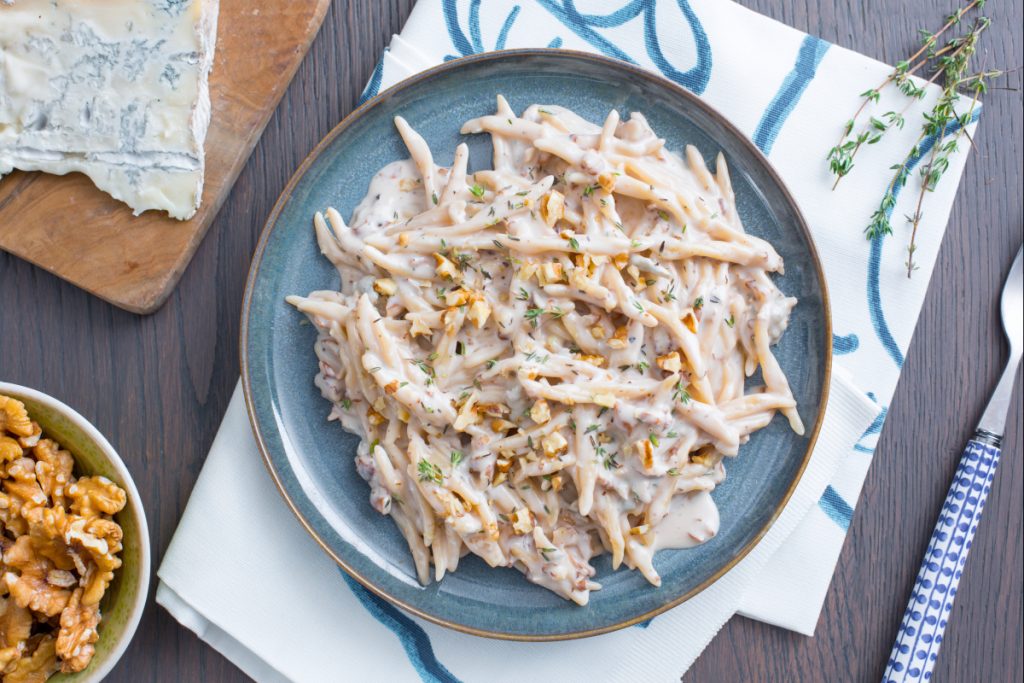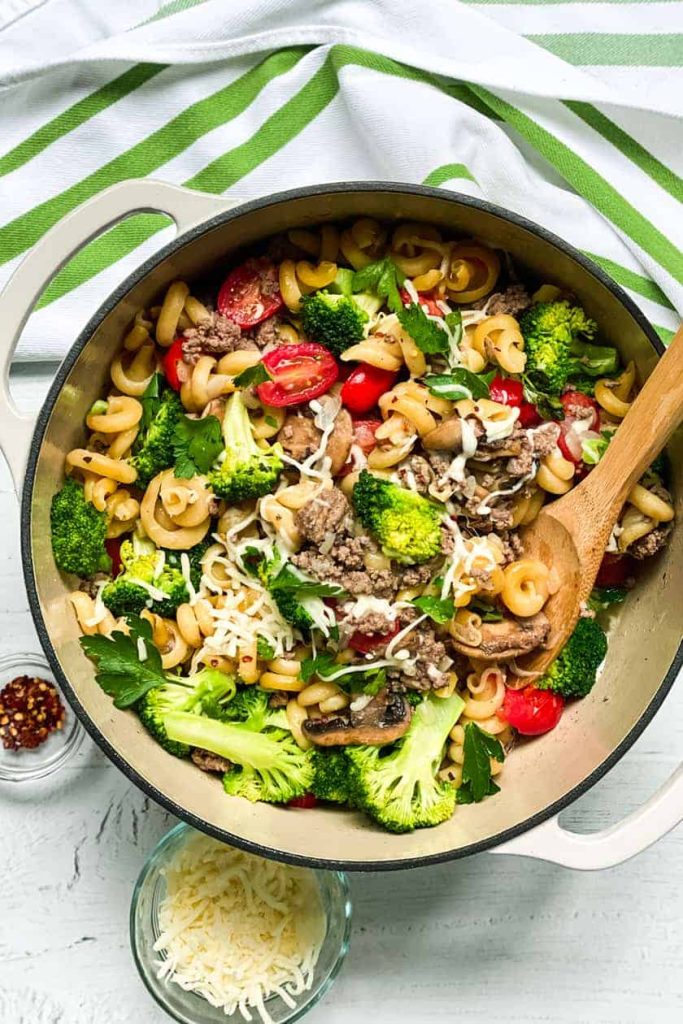Ciao, beloved guests and fellow food aficionados! I’m Chef from the warm and bustling kitchen of Italy Today Restaurant, hosted on italytodayrestaurant.com. It’s my absolute delight to guide you through the verdant flavors of a timeless Italian treasure—Pasta with Pesto.
Join me, as we weave through the streets of Genoa, the birthplace of pesto, where the air is perfumed with sweet basil and the sea’s embrace is present in every bite. Picture this: freshly-picked, bright green basil leaves, pine nuts toasted to golden perfection, fragrant cloves of garlic—not too many, just enough—a generous amount of Parmigiano-Reggiano, and the fruitiest extra-virgin olive oil. These are our key players in crafting an authentic Pesto Genovese.
But here at Italy Today Restaurant, while we honor tradition, we also believe in the beauty of personal touches. So, whether you prefer to pound your pesto in a mortar for that rustic texture or whizz it up in a blender for silky smoothness, the spirit of la dolce vita remains.
And what about the pasta, you ask? Well, trofie or linguine are the classic companions to pesto, creating the perfect nest for our emerald sauce to cling to. But creativity knows no bounds; twist and twirl your favorite pasta shapes into this verdant wonder, and watch as each strand or groove blooms with flavor.
As we embark on this culinary journey together, I will not just share my recipe, but also the joy and passion that comes with every spin of the fork enwrapping the pesto. The simplicity of Pasta with Pesto lies not only in its few ingredients but in the harmony each one brings to the table.
So grab your apron, select your freshest ingredients, and let us create a dish that sings with the flavors of Italy—a prayer of gratitude to Mother Nature and a sonnet to the craft of cooking.
Pasta with Pesto Recipe
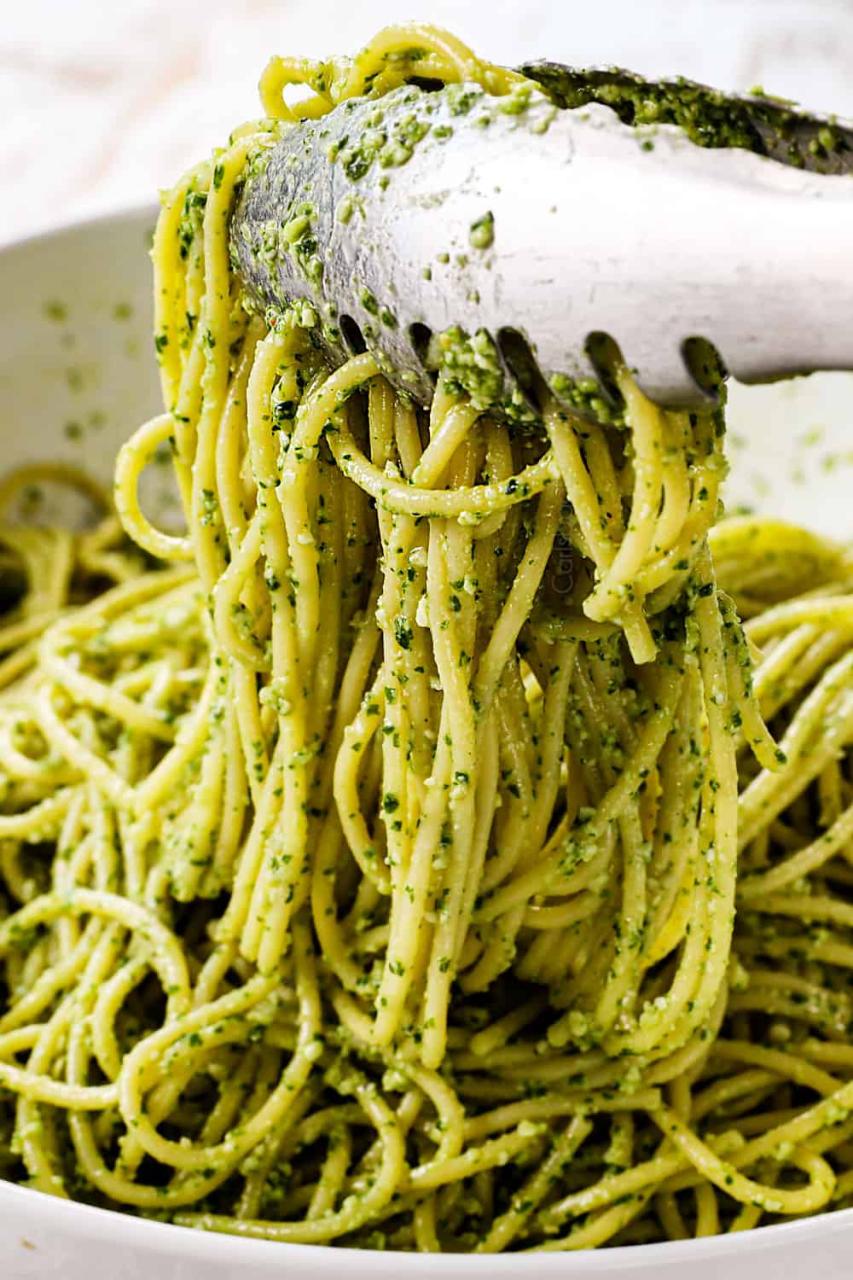

Pasta with Pesto
Equipment
- 1 frying pan
Ingredients
- 4 tomatoes
- 1 can peeled tomatoes
- 3 or 4 cloves of garlic
- 1 bunch basil
Instructions
- Heat a frying pan with oil, cut the tomatoes into thin slices and fry them.
- Peel the garlic and cut into cubes, wash the basil and cut it too.
- Add the peeled tomatoes into the pan with fresh tomatoes.
- Pound the garlic and basil.
- Once tomatoes are cooked, turn off the heat and add the basil and garlic. Mix.
- Leave pesto sauce off the heat until you cook the pasta.
Video
Liguria-Style Pasta with Pesto
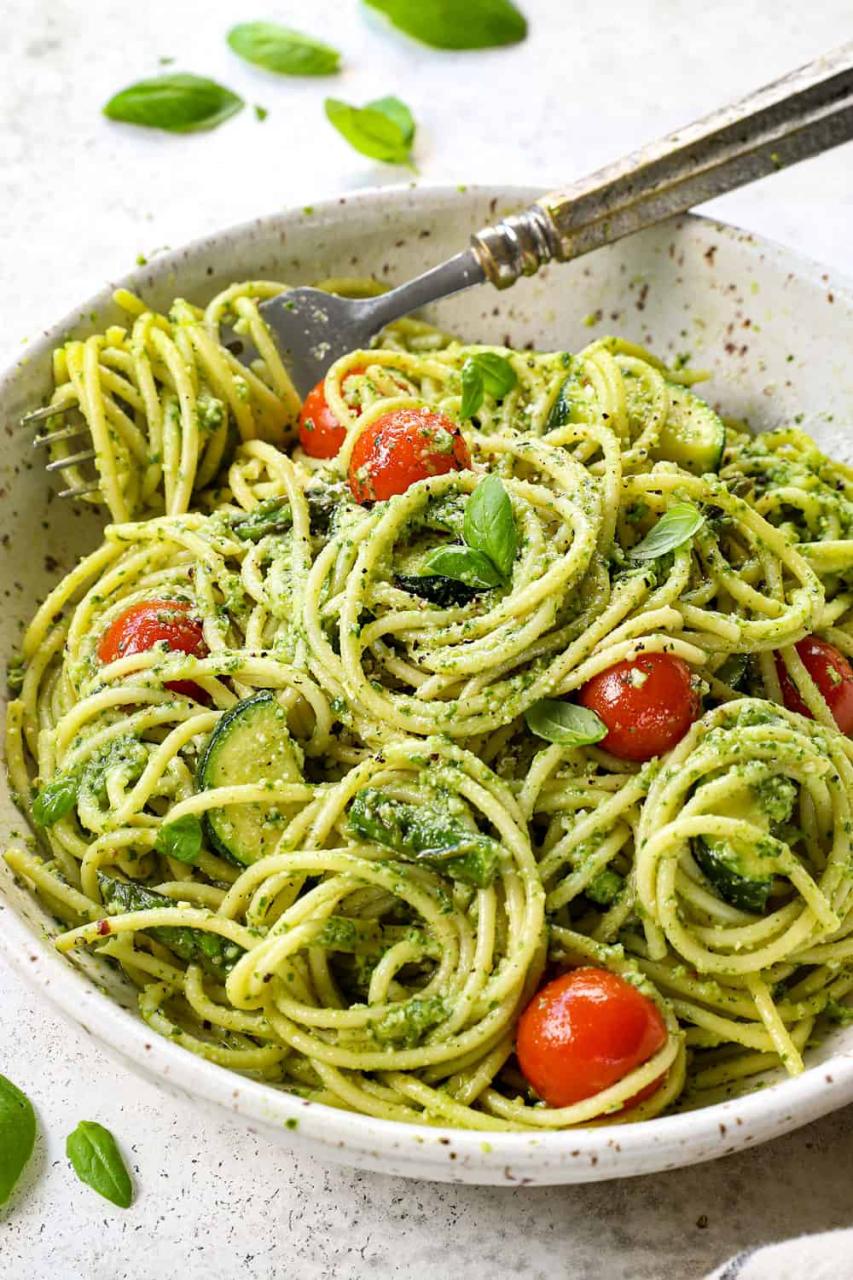
- Begin by making the pesto. In a mortar and pestle, crush the garlic with a pinch of salt to create a paste. If you don’t have a mortar and pestle, a food processor can be used for an easier alternative, though it will result in a less traditional texture.
- Add the fresh basil leaves and pine nuts to the garlic paste and continue to crush and grind the mixture until the leaves are broken down and you have a green paste.
- Gradually mix in the grated Parmigiano-Reggiano and Pecorino cheeses, continuing to work the mixture.
- Slowly pour in the olive oil, stirring continuously to integrate it into the basil paste until a dense and smooth sauce is formed. Adjust seasoning according to taste.
- Set the pesto aside and prepare your pasta. Bring a large pot of salted water to a rolling boil and cook the pasta according to the package instructions until al dente.
- Reserve about 1/2 cup of the pasta cooking water before draining.
- Drain the pasta and return it to the pot over low heat. Add the fresh pesto and toss to coat, adding a few tablespoons of the reserved cooking water to help emulsify and distribute the sauce evenly.
- Serve the pasta immediately, garnished with additional grated Parmesan if desired.
Tips for making about Pasta with Pesto
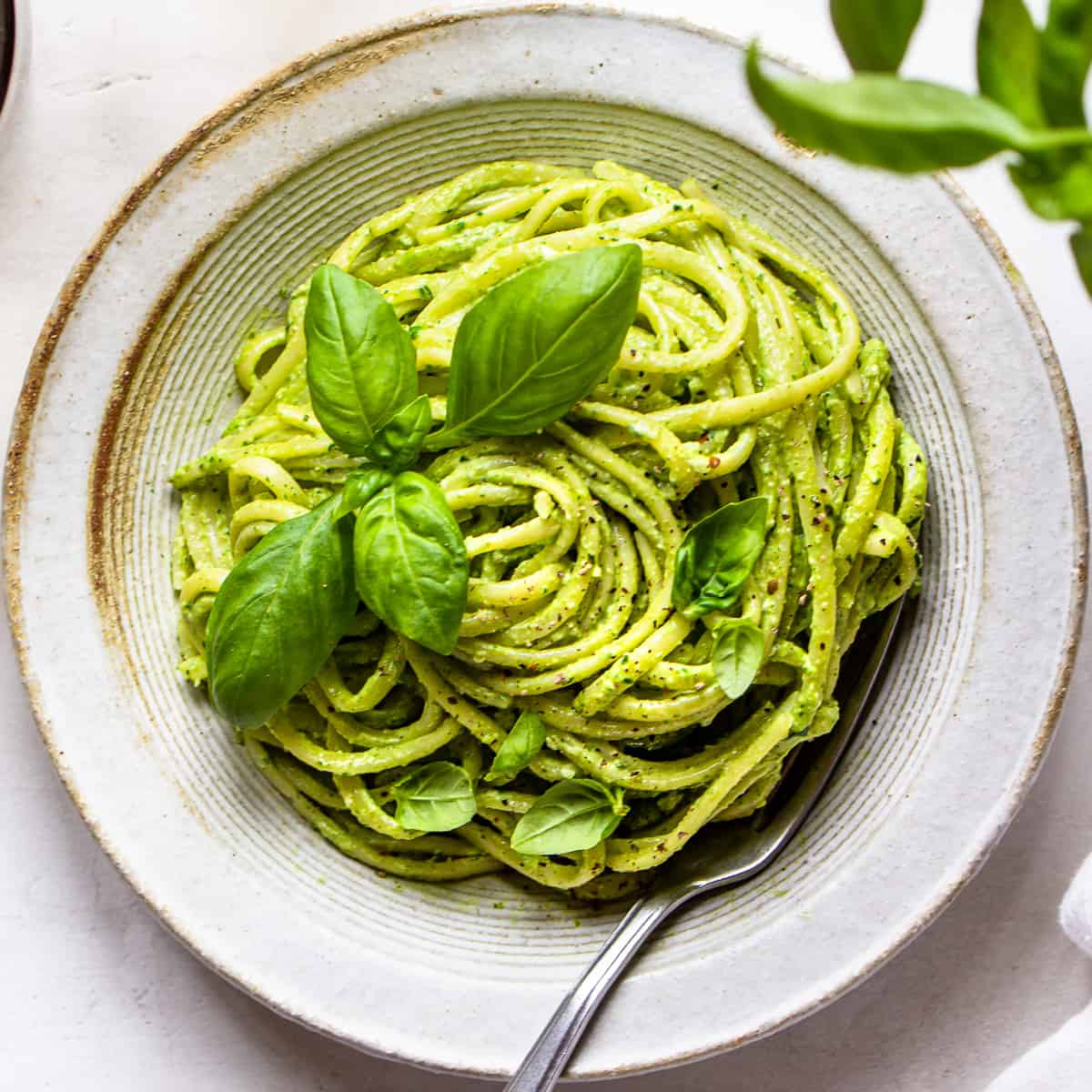
Cooking Tips
- Fresh Ingredients: The secret to an outstanding pesto lies in its freshness. Use basil leaves that are bright green and not wilted to ensure the most vibrant and fresh-tasting sauce.
- Toast Your Pine Nuts: Lightly toasting the pine nuts until they are golden will bring out their nutty flavor, which complements the basil beautifully.
- Garlic Balance: Garlic adds a zing to the pesto but use it judiciously. You want just enough to taste without overpowering the delicate basil and cheese.
- Cheese Choices: A combination of Parmigiano-Reggiano and Pecorino provides both nutty and sharp flavors. Ensure they are freshly grated for the best texture and taste.
- Correct Technique: When using a mortar and pestle, start by grinding the garlic and pine nuts, then add the basil leaves and grind to a paste before working in the cheese and oil. If opting for a food processor, pulse gently to avoid overheating, which can make the basil turn bitter.
- Emulsify With Oil: Add olive oil slowly and in a steady stream while blending or pounding the pesto. This emulsifies the sauce, giving it a creamy texture that adheres well to the pasta.
Serving suggestions
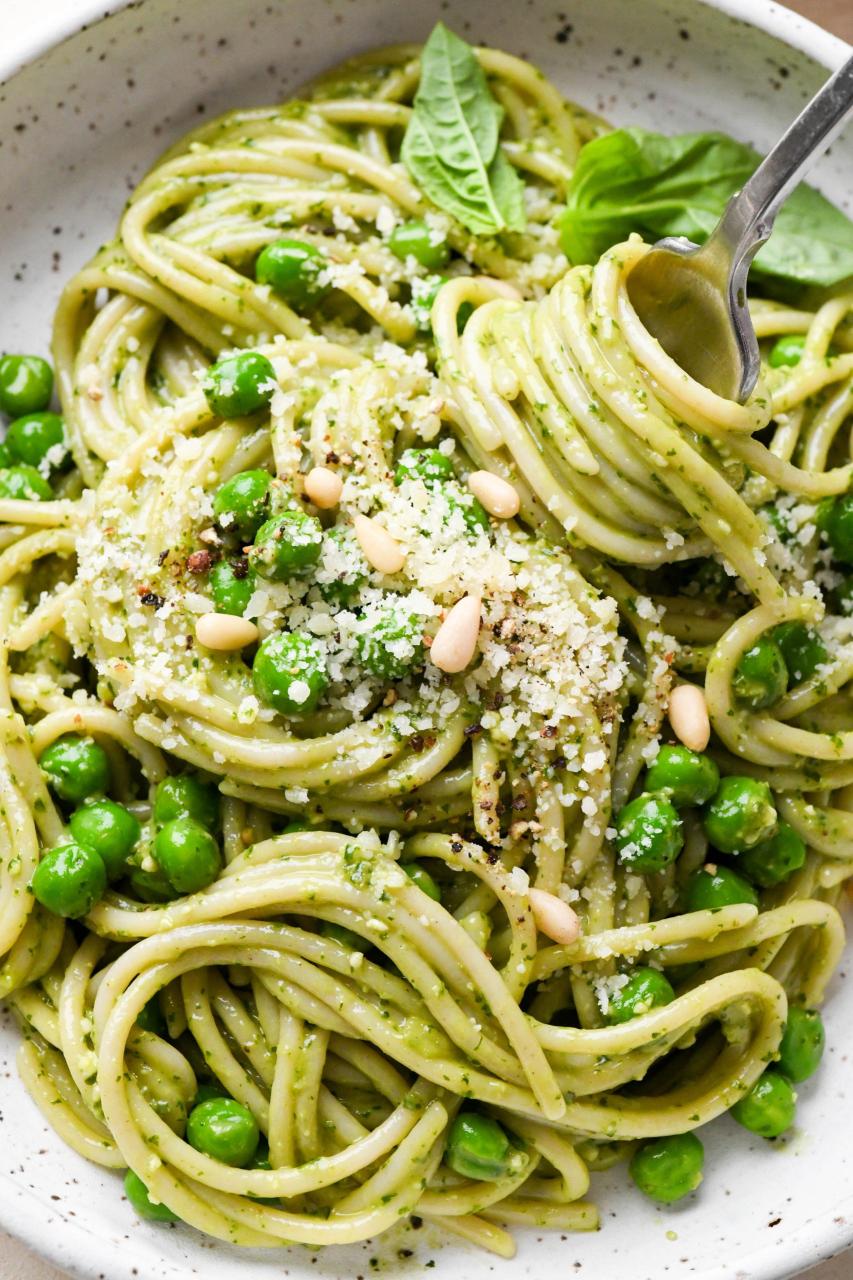
- Appropriate Pasta Choice: Ideally, serve the Pesto with Trofie or Linguine, which are traditional and allow the sauce to adhere well. However, any pasta that grooves or shapes that can cradle the sauce such as fusilli or orecchiette would also work well.
- Fresh Garnish: Sprinkle additional fresh basil leaves over the pasta for a pop of color and to enhance the aroma of the dish.
- Extra Cheese: Offer grated Parmesan or Pecorino cheese on the side for guests to add to their liking, bringing an extra layer of flavor and texture.
- Toasted Nuts: Toast some additional pine nuts and sprinkle them atop the pasta for an added crunch that complements the creamy pesto.
- Side Salad: Since Pesto is rich, present it with a light, crisp side salad of mixed greens dressed with a simple vinaigrette to balance the meal.
Top 5 FAQs about Pasta with Pesto
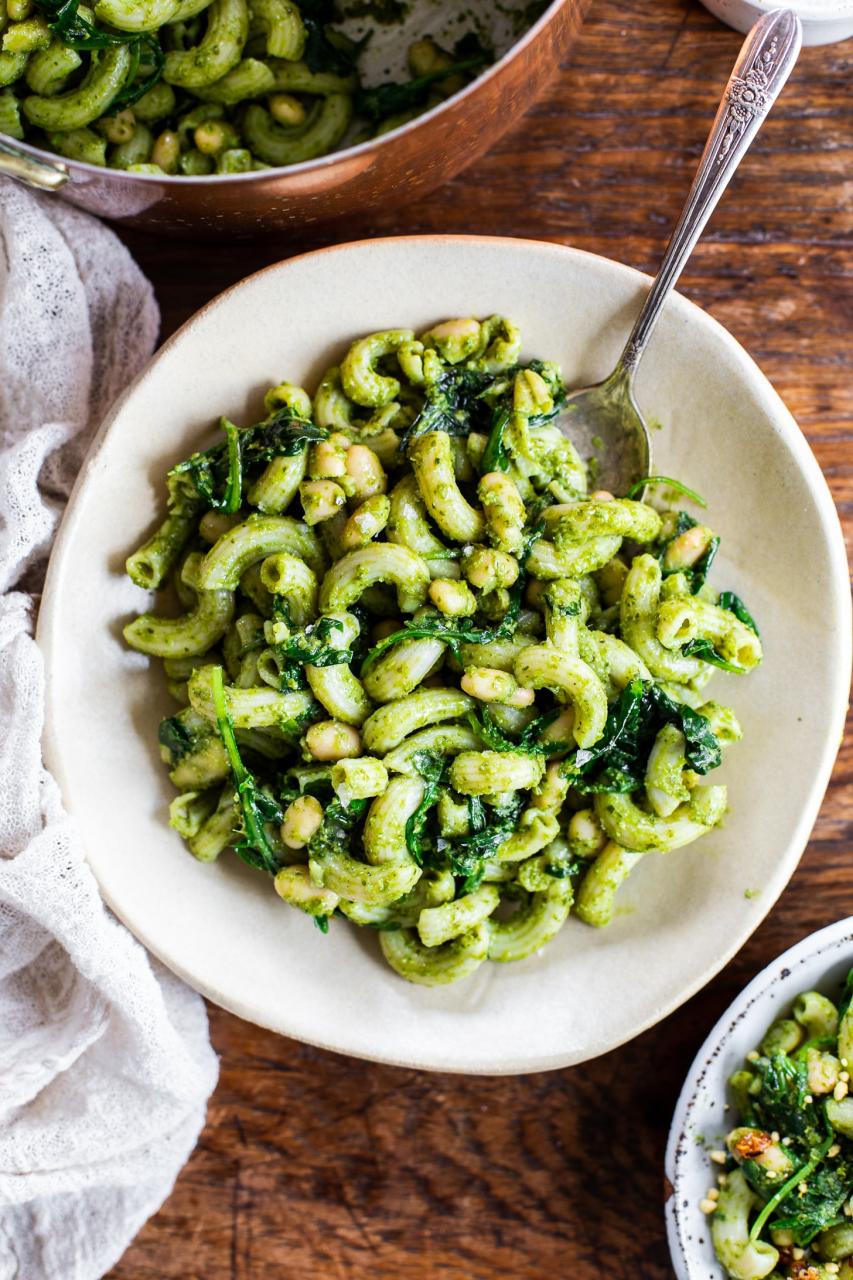
- What type of pasta is traditionally used with pesto? Trofie and linguine are the traditional pasta choices used with pesto, especially in the Liguria region where Pesto Genovese hails from. Their shapes are excellent at holding the sauce.
- Can I use a food processor to make pesto instead of a mortar and pestle? Yes, you can use a food processor for convenience, although a mortar and pestle is the traditional method and may yield a more authentic texture. When using a food processor, pulse gently to avoid overheating the basil.
- How can I prevent my pesto from turning brown? To keep your pesto green, ensure you don’t over-process it, as heat can cause the basil to oxidize. Adding a bit of lemon juice can also help maintain its vibrant color, and make sure to store it covered with a layer of olive oil if not used immediately.
- Can I make pesto without pine nuts? Pine nuts are traditional in pesto, but you can substitute other nuts like walnuts or almonds if necessary. Keep in mind each nut has a distinct flavor and will change the taste of your pesto.
- Is it possible to freeze pesto? Absolutely! Pesto freezes well. You can freeze it in ice cube trays for easy portioning and then transfer the cubes to a freezer bag. Thaw as needed and stir into freshly cooked pasta.
In conclusion, Pasta with Pesto is a quintessential representation of Italian culinary simplicity and elegance. This dish harmonizes the fresh, aromatic qualities of basil with the creamy texture of blended pine nuts, the sharpness of garlic, and the richness of aged cheeses, all bound together with the liquid gold of extra-virgin olive oil. Its roots deeply set in the picturesque Ligurian region, Pasta with Pesto has journeyed from its Genovese foundation to tables across the world, inviting home cooks and culinary professionals to partake in its time-honored tradition.
